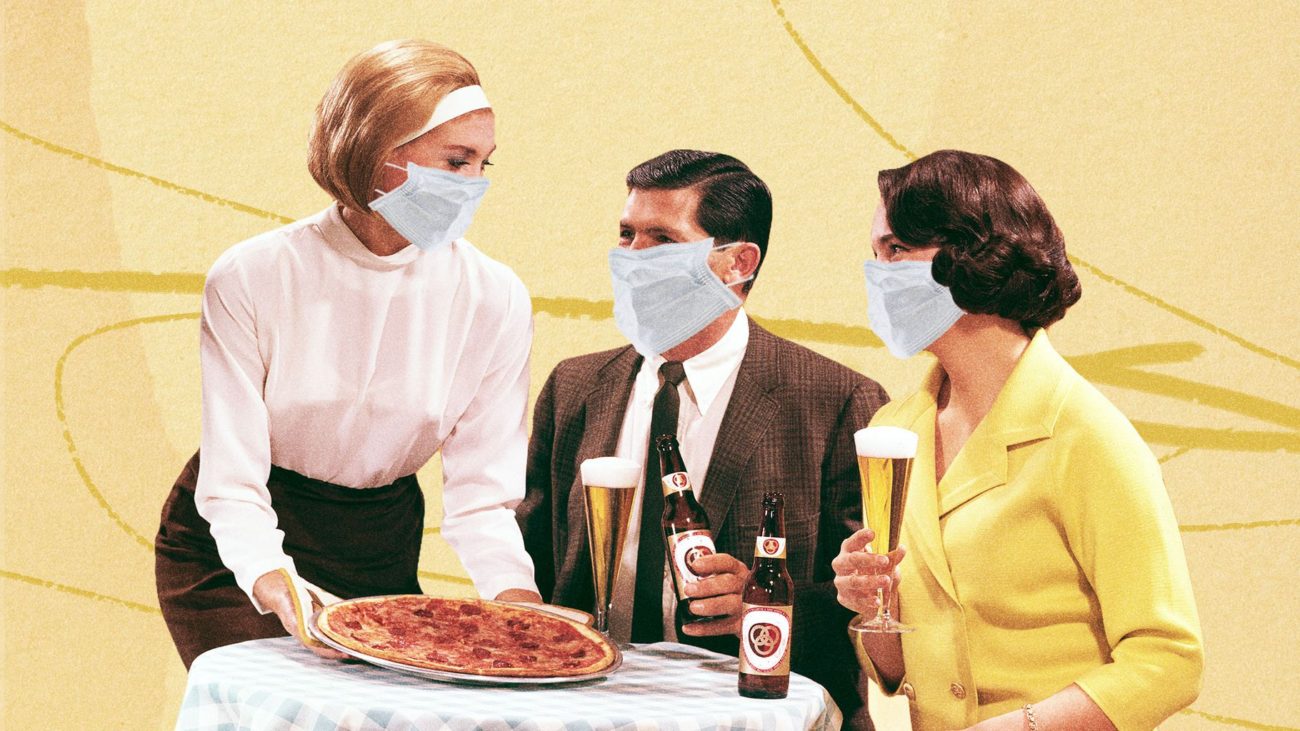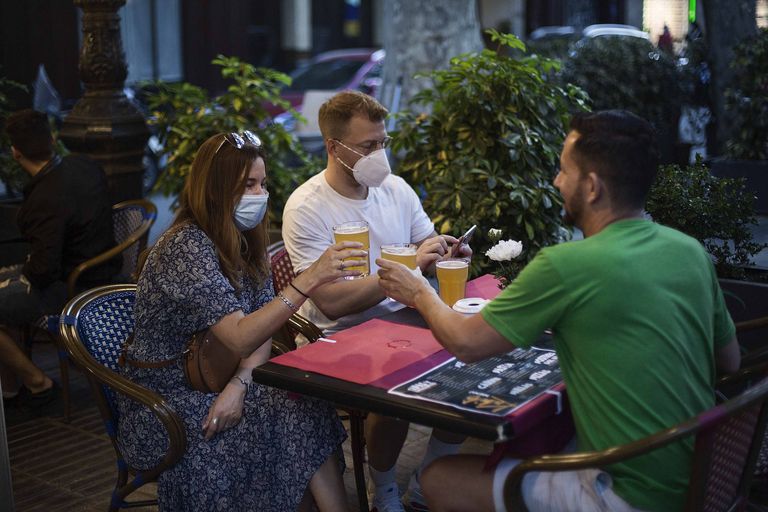
Connecticut is but one single solitary state that has clamped down on public activity, business operations, and asserted itself in cautious messaging to its residents for the last two months.
There are 49 other states in our country. Many have done the same, if not more. Some have done less. Still other state governments, in doing little from the start, or acting late, have cemented their reputation as lands of questionable judgment.
I am fortunate to live in a community with a leading educational institution that publishes articles such as these to remind readers to stay vigilant, and stay smart. But, there’s more to it than that. People can not wait for articles like this to magically drop from the sky into their lap. We need to proactively follow writers and dispensers of information that are interested in our public health and knowledge scores. Not politics and commerce interests. I “choose” to subscribe to, and trust, posts and information lines like these.
As I drove through a couple neighboring towns in New Haven this past “re-opening” week, I noticed some things that changed literally overnight. Restaurants have set up outdoor tables wherever they can in hailing distance of wait staff. At one of these outdoor table, sat four diners kicking back in their summer shorts, golf shirts, and sleeveless dresses, crowing, laughing, having a good ol time while throwing back beers as if all were finally as it should be. I couldn’t help thinking this group, as many others, felt it should’ve been this way all along since early April. Just down the road, at a popular tequila bar, sitting at a single hi-top table positioned directly on the sidewalk, just aside of its main entrance, and inarguably, encroaching on foot traffic passing by, sat five people elbow to elbow indulging in happy hour. Over the next days more of these sightings were obvious. People sitting together in parties of four, or five, just barely six feet apart from more tables with other people having food and drinks brought out to them. In virtually all of these scenarios, the tables were directly on the sidewalk, sometimes, not always, separated by a waist high iron or wooden fence, where pedestrians were walking by close enough to pick a french fry off a table.
I know I’ve got company who would find both these scenes unsettling at this time and place. I also know there are others who are next in line to grab a table and damn the torpedoes. Thus is the pervasive contradiction of human behavior which opposes as much as it embraces, sometimes with careful deliberation, sometimes with thoughtless impulse.
Ever since this viral mess reached its second month in April, no less June, there’s been as much discussion about the social casualty of isolation, as there has been about the economic and health casualties. There have been so many stress points trying to reconcile these very different vested interests, that the conversation inevitably degrades into conflict, judgment, and lost tempers among people who might not otherwise be colliding in their lives.
The question was glaringly obvious. How is it possible to prioritize these three distinct focal points affecting human beings in such direct and powerful ways, each of which has its own intertwined impact on the other? To me, it is almost impossible. Where does impossible leave us?
It became clear to me months ago, and remains so, that these challenging times are at the top of the list of what organized central government was conceived to address. For instance, conceiving and executing comprehensive plans to address major issues impacting our economy, our public health, and our societal well being. Sadly, during this time, it also became clear, that our federal government would fail us spectacularly in this fundamental mission.
So, are we back to impossible after all? I don’t believe it is impossible IF reality is faced, sacrifices are made, and the inevitable losses are accepted. If we as individuals, as groups, as calm, meditative thinkers, with respect for ourselves, and life around us, gather credible information about this public health risk, and act responsibly, we can salvage the best outcome for ourselves. Even given inevitable losses, there’s a control for a better or worse outcome. Its horrible. Its been horrible. People died. More will die. Business closed. More will close. People lost jobs. More will lose jobs. Still, I ask, you want better, or worse?
Covid -19 is still here. It still gets people sick, and it still kills. As true as it was in February and March, it is true now. Any single action by any given individual in the public space has the potential to trigger a transmission contact, and that person to the next, and so on, and so forth. In case any of you have lost sight of this. This is how an epidemic, and pandemic works. It’s how we got here in the first place. It’s not just about what one person does, or one small group of tipsy teenagers throwing back shots at a crooked table outside a dive bar. It still is about all of us. Its still the same. The virus is still here in plain sight. And there’s still no cure for it.
Let’s all just say for the millionth time. It sucks. It sucks thinking about this all the time. But, we still have to think about it. We still have to think twice before we decide to act like we used to act.. So let’s do that. Think twice.
>MB
Reprinted from Yale School of Public Health: Link>
“Risk of Resurgence” in COVID-19 Epidemic if Connecticut Reopens Too Quickly, YSPH Report Finds
As Connecticut tentatively reopens this week after a two-month shutdown, a new report by the Yale School of Public Health warns that if people resume normal activities and contacts too quickly there will be a “sharp resurgence” in hospitalizations and deaths in the coming months.
Associate Professor Forrest Crawford and postdocs Olga Morozova and Zehang (Richard) Li created a mathematical model to predict COVID-19 transmission, hospitalization and deaths in the state under “slow” and “fast” reopening scenarios.
If the state reopens too quickly, a second wave may be unleashed, the effects of which could be worse than what has already happened. It could result in an estimated total of over 8,100 deaths by September 1 in Connecticut. More than 3,500 state residents have already died from coronavirus.
“If contact rates return quickly to levels seen in early March, the number of new cases could rise dramatically over the summer” said Crawford, the report’s lead author. “Connecticut decision-makers need to closely monitor data on new cases and hospitalizations, as well as transmission model projections, in order to reopen the state safely.”
Under a slow reopening scenario (defined as relaxing restrictions so that contact increases at a rate of 10 percent each month) the incidence of the disease will still increase slightly in the coming weeks but will taper off and stay at lower levels. Hospitalizations for the disease will continue to decline, rising slightly in August and the number of coronavirus-related deaths will rise slowly, with an estimated total of 4,600 to 7,100 by September 1.
Under the fast scenario (defined as increasing contact at a rate of 10 percent every two weeks), Crawford and colleagues found that the number of new infections is likely to spike throughout the summer, potentially exceeding hospitalization capacity and resulting in anywhere from 5,400 to 13,400 total deaths by September 1.
“These projections are based on the latest available data and knowledge from the scientific community,” said Li. “As we gather new evidence about transmissibility of the disease and effectiveness of interventions, our model projections will improve.”
If contact rates return quickly to levels seen in early March, the number of new cases could rise dramatically over the summer.
The researchers attributed the recent decline in hospitalizations to the reduction in contacts following distancing measures implemented by the state officials. “It is too early to return to normal. As some businesses reopen, it is even more important for people to continue practicing social distancing and avoid traveling to highly affected areas, most importantly New York City,” said Morozova.
Yale School of Public Health Professor Albert Ko co-chaired Gov. Ned Lamont’s ReOpen Connecticut Advisory Group, which strongly advised a cautious and conservative schedule as the state starts to return to normal.
“These model projections of the future risk of COVID-19 resurgence directly informed the recommendations made to mitigate this risk,” Ko said. The advisory group, which recently completed its work, was not involved in the preparation of the report.
Other key points from the report include:
- Real-time metrics (such as hospitalizations, case counts and deaths) may not provide adequate warning to avoid a resurgence.
- Closure of schools and the state’s stay-at-home order greatly reduced transmission of the virus.
- There are substantial gaps in knowledge about critical aspects of the disease, including the proportion of infected individuals who are asymptomatic, infectiousness of children, the effects of testing and contact tracing on isolation of infected individuals and how contact patterns may change following reopening.
Reprinted from Yale School of Public Health: Link>

